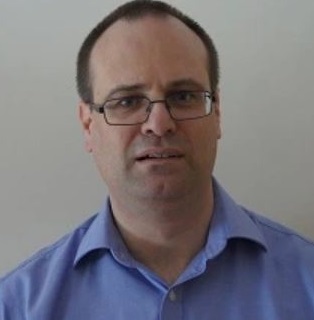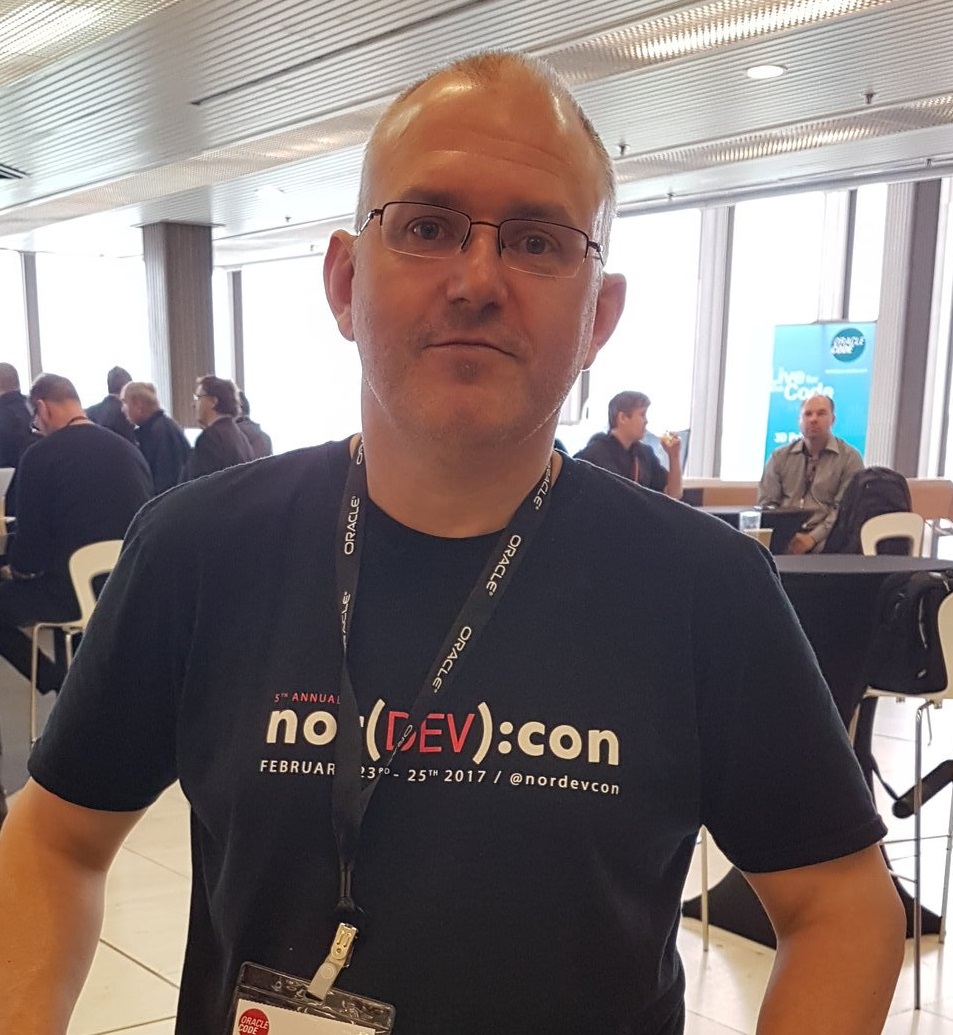We were fortunate to be part of the team at the recent Oracle CloudWorld (OCW) Tour London event on April 19 at London’s Excel Center. The CloudWorld Tour brought updated highlights from Oracle’s leading conference—Cloud World in Las Vegas—last autumn and some new announcements.
Many stopped by our stand to see our bicycle rental demo, and quite a few of them took a virtual bike tour of Paris. The use cases for the demonstration are based around the lifecycle of a rental bike, from manufacture to rental and disposal or sale.
Keeping track of the records
When the bike is manufactured, a non-fungible token (NFT) is created as a digital twin of the physical bike. All events occurring throughout the bike’s lifecycle, such as when the bike is hired, are recorded against this NFT using the OCI Blockchain Platform.
Why blockchain? Multiple parties have an interest in the bike: The manufacturer, the rental company, insurance, maintenance partners, regulators, and whoever buys the bike when it gets retired by the rental company. These parties likely wouldn’t be happy to rely on a single database maintained by only one of them because their interests might not align. However, if they each retain their own records for the bike, the bike’s record is likely inconsistent and incomplete. A complete, accurate history of the bike requires data from all parties to resolve any inconsistencies between these data sets.
By using blockchain, we can provide a shared, distributed record of the bike’s lifecycle. Each party can read from and write to the blockchain, delivering a complete, consistent data set with an immutable history for the bike without the pain of stitching together data from multiple different sources and formats. It also ensures transparency and facilitates trust between the different parties because each party might have its own node within the server cluster.
The Biking around Paris demo
For a rental customer to find the bike, we need to be able to tell them where it is. We need to be able to track the bike’s location using GPS tracking. Because at the OCW Tour event, the bike wasn’t going anywhere, the sensors we fitted to the bike detected the motion of the back wheel, so we could record speed and distance “traveled.” We also wanted to track the physical location in a real-world system.
This sensor data is sent to the Oracle Internet of Things (IoT) Asset Monitoring Cloud service. Depending upon the sensors fitted to the bike, we can also potentially detect when the bike needs maintenance and even employ AI to enable predictive maintenance and service the bike before a (more costly) malfunction is likely.
We have our bike, its service history, and its location. Now, all we need is a way for the customer to rent it. To simplify this process and avoid the customer having to install yet another app on their phone, the booking interface is conversational and can be engaged through a web page or social channels, such as Slack and Facebook Messenger. This conversational interface uses a chatbot built with Oracle Digital Assistant, enabling the customer to book the bike using a mix of natural language and prompts. The system can also use OCI Vision to recognize and read a customer’s identity documents, such as a passport or driver’s license, using their smartphone or a kiosk equipped with a camera.
In the final part of the story, the customer rides the bike. To make things more interesting than peddling a static bike in a crowded hall, we added a virtual bike tour through Paris.
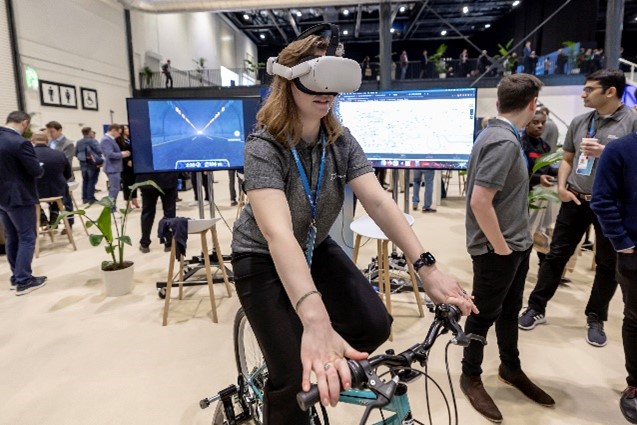
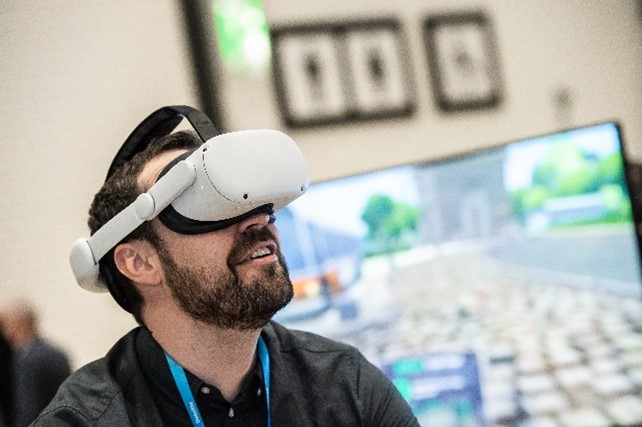
The virtual tour was quite popular, and our demo stand was busy all day. Plenty of people wanted to discuss the technology used in this demonstration and how they could use these modern services to solve problems in their industry or organization. The most common question during the event was, “Can I use something like this in a healthcare setting?”
This question came from front-line healthcare providers, such as hospital trusts and healthcare tech providers, who described the following typical scenarios:
-
Tracking where a shared asset is when you need it: “We waste a lot of time in our hospital just looking for pieces of equipment.”
-
Detecting when a piece of equipment needs attention before it fails: Preventative or predictive maintenance.
-
Audit trail for medical supplies to ensure traceability.
-
Audit trail for prescriptions: Ensuring that all clinicians involved in treating a patient can see the full set of prescriptions for a patient and that these have been administered correctly.
The second most common industry that we engaged was Logistics, where the scenarios discussed included end-to-end audit trail for supply chain management and tracking items and consignments. We worked on a project for an automotive customer a few years ago where the challenge was tracking parts. They had separate plants for engine production and vehicle assembly. When the assembly line needed the engine for a vehicle, often that engine was “somewhere in the goods yard.” The cost of stopping the production line was so great that sometimes it was cheaper to get a new engine couriered from the engine plant than to find the one that had been sent. By placing tracking devices inside the crates containing the engines and using the IoT service, we enabled the customer to track the engines from one production line to another accurately.
For another customer, we worked with a supermarket’s partners for preventative maintenance on the refrigeration equipment used in their supply chains. Again, the solution was built with Oracle technology and runs on OCI.
Translating the demo to the real world
While the demo was fun and popular, it wasn’t all about the bike. The capabilities used to deliver the demo have serious applications across a range of industries. OCI can deliver these capabilities as part of our comprehensive cloud platform and extend them where necessary with the other technologies across Oracle.
The application of blockchain can span any use case that needs collaborative storage of assets, such as supply chain visibility and immutable cryptographically secure transactions. Plus, consider the wealth of possibilities with AI Vision and Digital Assistants.
Lego vision
With the bike demo, we had another demo using Lego to bring everyone’s inner child out to play. This demo focused on using OCI AI Vision and a little bit of code from OCI Functions and OCI Database. Using their smartphones, conference attendees launched a simple application that prompted them to take a picture of one of the Lego models we had on display, representing a famous architectural monument or building, using their phones. When the picture included one of our Lego models, the AI Vision capabilities identified what the image was, which triggered the OCI Function service to look up some information about the landmark in a small Oracle database and overlay it on what the camera was seeing.
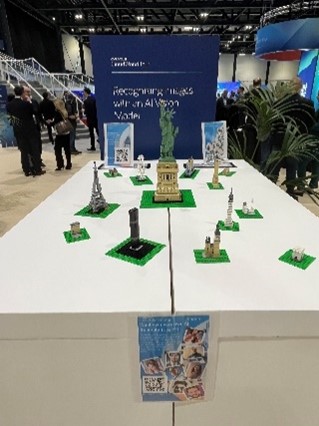
The model that the AI Vision service used was seeded with a small training set of pictures of each Lego model. Much interest was expressed in how little effort and coding was involved in the solution and whether the AI could recognize the real buildings. Because the sample training set was very limited, it wouldn’t be sufficient to match the real buildings.
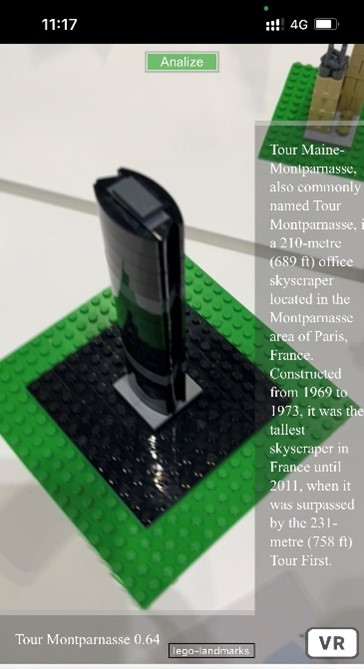
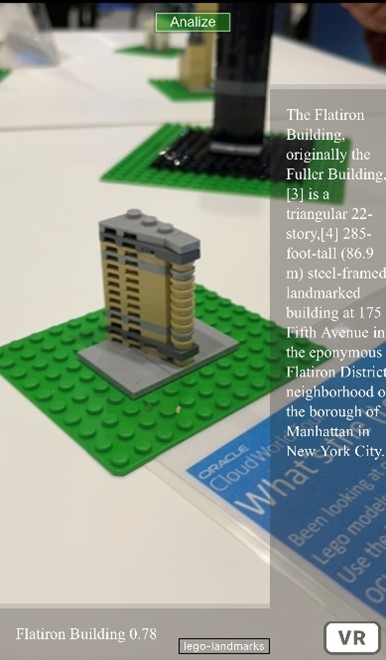
From Lego to real-world applications
When it comes to the real-world applications of these capabilities, the transition from a conference demo to a real-world tour guide for museums and cities eliminates the need for tourists to start and stop an audio guide while following a prescribed route or scan QR codes everywhere to learn more about the sights or exhibits. The application of AI Vision offers diverse possibilities, from building security where it can identify faces on security cameras to production lines and assessing for any defects with products as they arrive.
Find out for yourself!
If you want to learn more about how Oracle Cloud Infrastructure can help you, sign up for a free trial account, get hands-on with our LiveLabs, or reach out through our DevRel Slack channel.
To learn more about the demos at the Oracle CloudWorld Tour London event, see the following resources:
